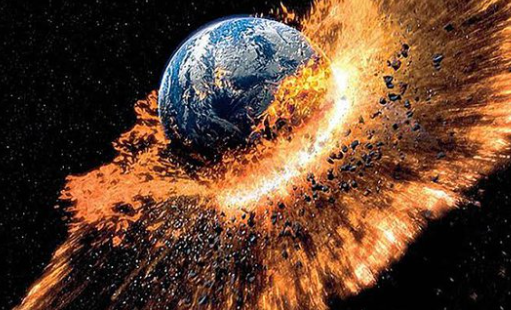There is a small asteroids about 11m KM away from earth. It is a little bigger than our cricket grounds. It is orbiting another asteroid. The other asteroid is also a relatively small little smaller than 1 km. A few months before scientist, sent a fridge sized spacecraft towards this smaller asteroid

Then this spacecraft collided with the smaller asteroid. Now both these asteroids orbiting one another pose no threat to the earth. Then why was the spacecraft sent to collide with the smaller asteroid?
Impacts in the Solar System
Many rocks remain after the formation of our system which did not become a part of the planets. These types of rocks are called asteroids. And there are some ice ball types of things towards the outer side of our solar system, which are called comets (stars with tails). We know that in our solar system, these asteroids and comets keep colliding with things. If you look at the moon you will see many craters on it. The reason, the first thing is there is no atmosphere on the moon, even a small piece collides with its surface and its marks can be seen from here. It means asteroids (rocks) collide with things.
In 1994 a comet name “Shoemaker Levy 9” collided with Jupiter.

In fact it had broken into pieces before colliding the tidal forces of Jupiter had broken it up a little
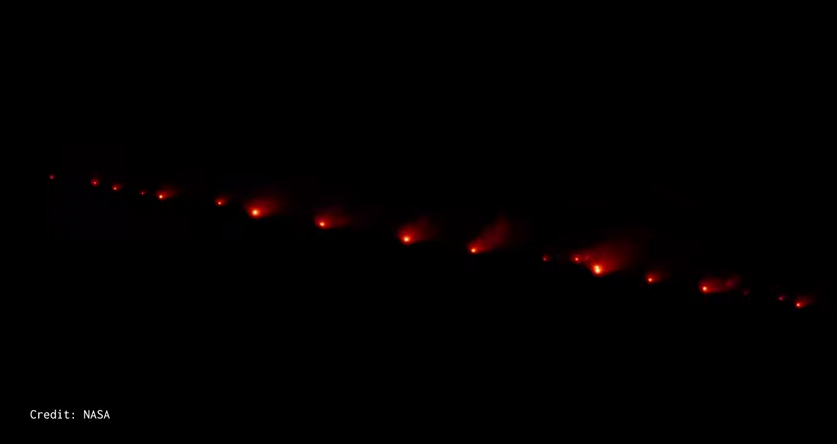
But after a few days it collided with Jupiter. From earth it was a magnificent view for us (through a telescope) but it conveyed to us that this type of big impacts are possible even today.
Rather it has benefited our type mammals too because 66 million years before dinosaurs were at the top of our food chain on Earth.

The idea is a big asteroid crashed into the Earth and become of that most of the big animals like dinosaurs become extinct and the big mammals, at that time was more like mice, they survived. And then after 65 or 66 million years of evolution some mammals evolved who could check (with a telescope) these type of asteroids which finished the dinosaurs and may finish us also.
The danger of the collision off asteroids is not like ‘maybe they will collide’. They will definitely collide, but the question is how much before we will get the warning and then can we do anything about that or not.
Earth-Threatening Asteroids
This was about 1990’s that NASA was given a task to identify all the big asteroids (more than 1 km) which are near the Earth. More than 90% of those have been identified. Now the task is to identify all those smaller asteroids which are a little bigger than our cricket grounds in size. Up till now 29,000 asteroids have been identified which are near to earth.
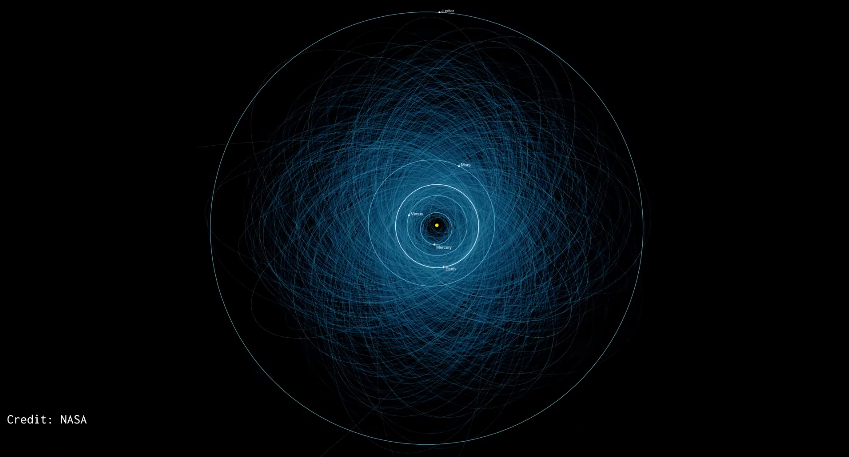
you are seeing a graph which is showing you the mapping of about 1400 asteroids whose orbit crosses the orbit of the Earth. By the way, if you see the flipside this was only about danger. Then you talk about asteroid mining these type of asteroids are good for asteroid mining because they are not far from us.
Let me clarify one thing! As of today none of the identified asteroids is on a part of a collision with earth. Up till now there is no such thing.

See this graphic I think this is awesome because this tells us the number of asteroids about which we knew in 1999.
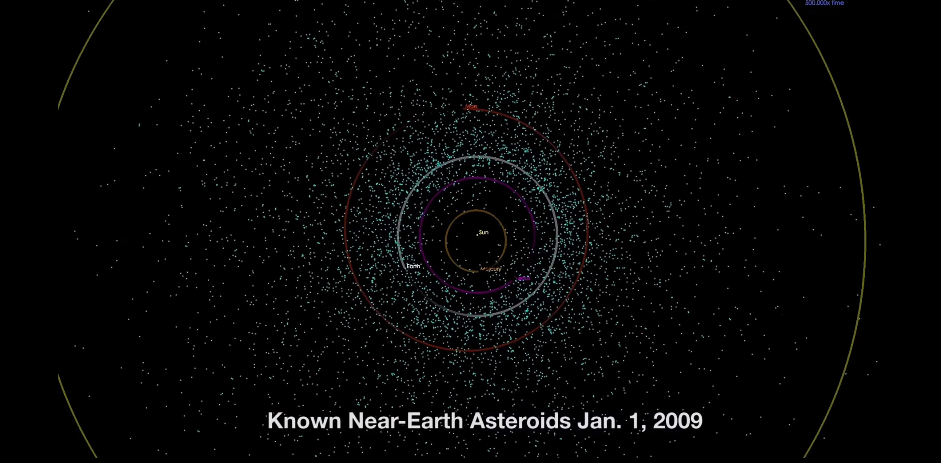
In 2009 we knew more of those and this last phase is of 2018 and then it gives you a little perspective.
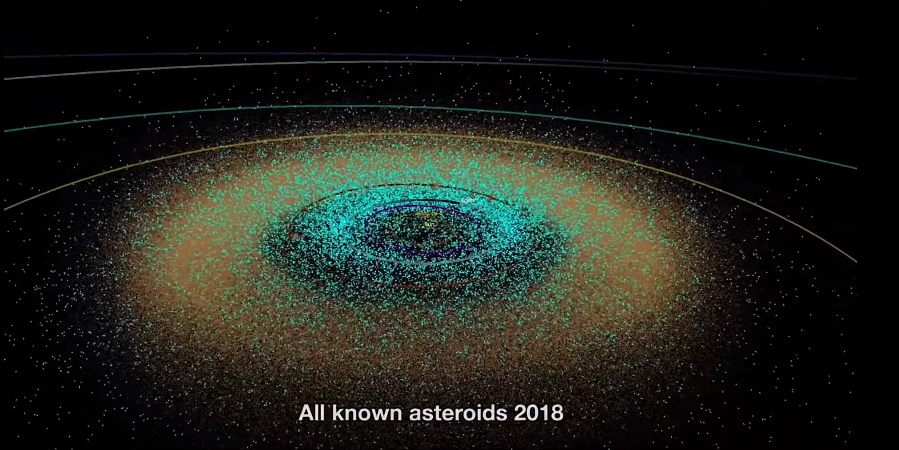
No doubt space is unlimited but these rocks are also wandering around a lot.
Again, there is no threat to add from these at the moment, but at sometime this type of asteroids will collide
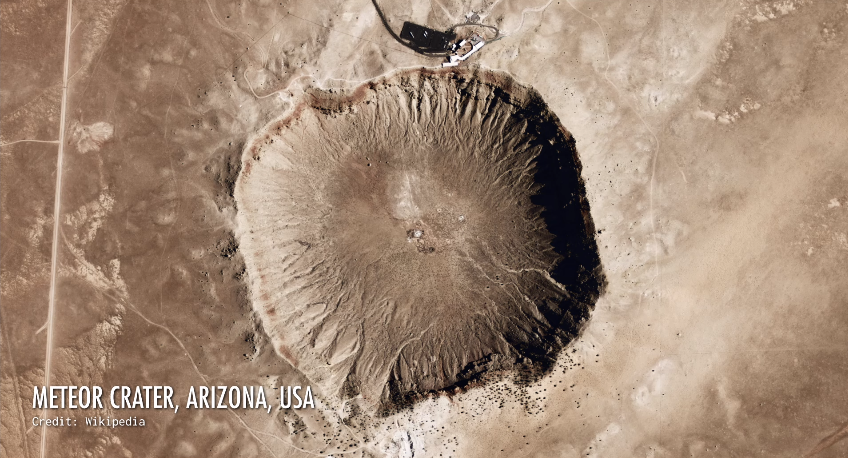
and also keep on colliding because we know that in the past these sort of rocks or asteroids have been crashing on this earth. By the way I am talking about asteroids. These comets which are on the outer side of our solar system are also a danger to us. This type of 100 short period comets have been identified by us. But comets from far off can come for the first time, crash on the Earth and wipe us out. So to catch them in this sense is difficult.
How to deflect an asteroids
But talking about asteroids if we find out an asteroid is on path to collision with earth what do we do about it. If there are 48 hours for such a big asteroid to reach us you can do only one thing. And that is find out at which place you are when you die.
I think at the collision time tsunami will be a good place. Go near the ocean and at least you will see a beautiful scene at the end. But the reality is small asteroids even about 1 km can devastate the earth. But if we have a warning of a few years then we can decide what to do about it. We have many techniques about it. If we change its orbit a little bit it may miss the Earth.
The normal notion which we have that we will explode it, create a bomb blast there is not generally a good thing because of the danger is the asteroid is broken into several pieces the trajectory of those pieces will also be on this earth. If instead of one piece multiple pieces crash probably there will be more destruction.
The idea is if we change the trajectory, the orbit (of the asteroid) a little and we have ample warning time, we have to change it a little and it will miss the earth. But how to test type of techniques?
Hitting an asteroid
One idea is you can change the orbit of an asteroid with an impact, this is called kinetic impactor. If a spacecraft collides with it the asteroid will receive some momentum from the spacecraft and because of that its orbit will change a little. But it depends on what are the asteroids made of.
Up till now it was assumed they were boulders, tight, rock type

But the recent missions, a Japanese mission Hayabusa2 which went to an asteroid Ryugu and another American mission Osiris Rex which went to an asteroid Bennu.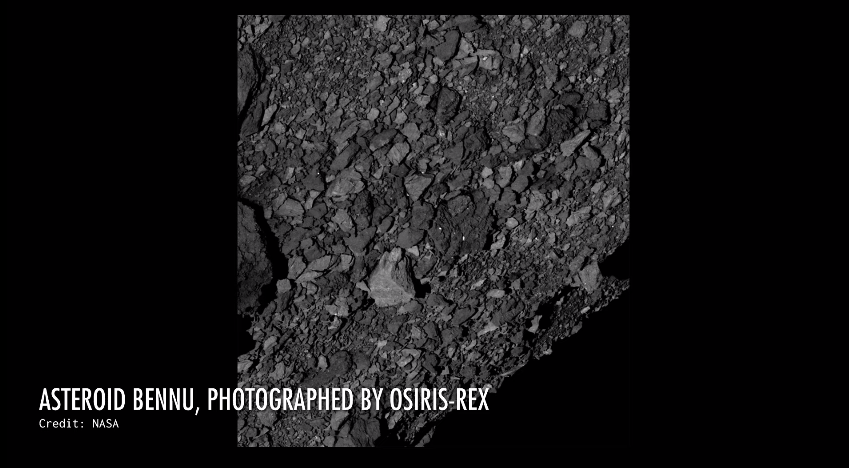
Both of them saw these asteroids (the answer to its samples) are of loose type of rubble. This means that if something collide with it, it’s orbit can easily be changed significantly.
DART Mission
To test this very thing NASA sent DART mission.
DART stand for ‘The Double Asteroid Redirection Test’ dart this is a good acronym. This is a small spacecraft, fridge sized, which collided with a small asteroid ‘Dimorphos’ at a distance of 11mn kilometer from earth.
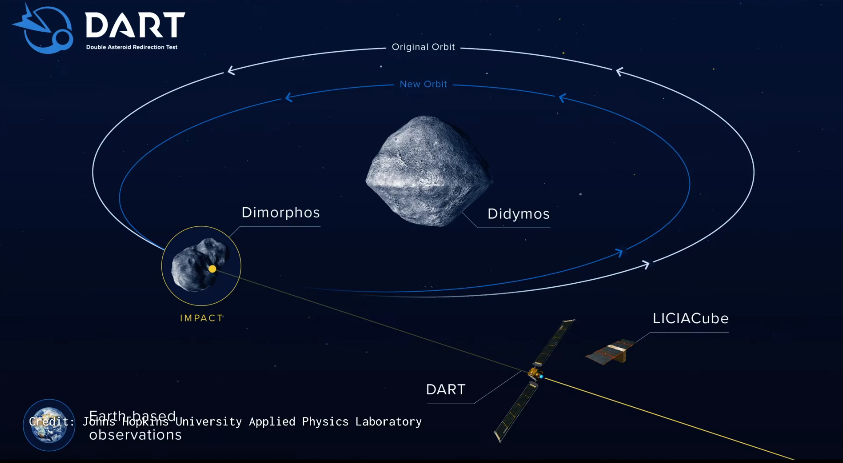
When it collided the speed of the spacecraft was 22,000 km/hr. Meaning it collided with it at great speed.
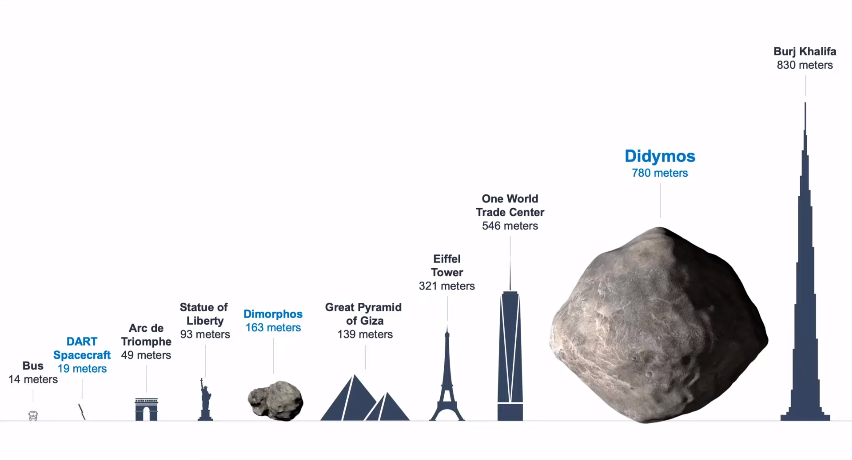
Now this Dimorphos is larger than our Cricket grounds to cricket grounds to be precise and it is orbiting another asteroid name Didymos meaning these are binary asteroids. Didymos is a little less than 1km.
Now we know precisely that Dimorphos takes 11 hours and 55 minutes to complete one orbit. Now when DART that spacecraft collided with it, we can test how much the orbit of Dimorphos has altered. The prediction of the scientist is it will reduce its orbit by several minutes.
This spacecraft has already collided with it on 26th September but it will take some weeks or months to me on the exact time of this new orbit. Then we will come to know what changes have occurred in the properties of that asteroid due to the speed and momentum of the spacecraft
Crash
But one minute, you appreciate a little the fact that this spacecraft collided with a small asteroid (160 mtr) at a distance of 11m km at the speed of 22,00km/hr and it’s navigation for the last few hours was on and did not allow it to obey the commands from earth. This is amazing that scientists struck such a small target so far.

The last picture was not received fully because by that time the spacecraft had crashed and it could not send a full picture.
You must be wishing someone else could take a picture to know what happened to the asteroid (picture from a distance). Actually, there was a baby cube with the spacecraft named LICIACube, of the Italian space agency.
This separated from the spacecraft prior to the impact and was trailing it and these few pictures were taken by LICIACube sat.
Not only this but Hubble space telescope and James Webb space telescope also
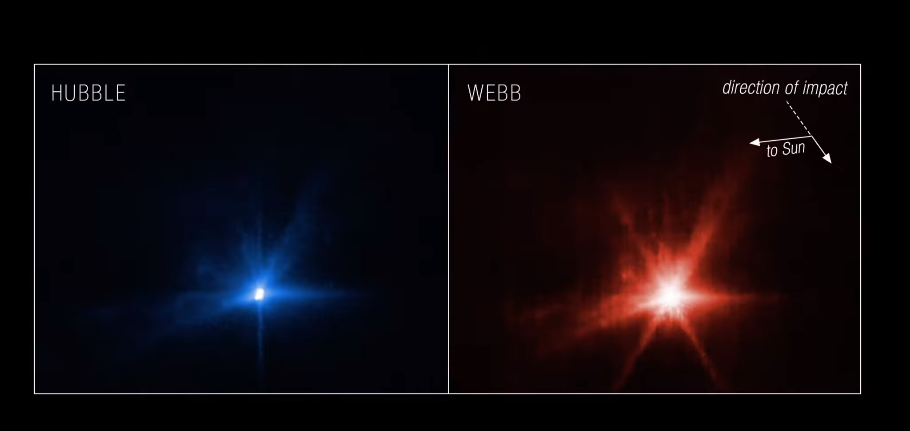
Show picture of this impact and many ground based telescopes also did it.
We have a lot of information about when this DART spacecraft collided with Dimorphos how did the ejecta come out from there.
Conclusion
This DART mission has been successful and justifiably NASA and scientists are saying that this is the first test of our planetary defence or the defence of our planet and this is true. In a sense this is good we are seeing in the future, if in future asteroids (again asteroid are going to strike), if we know they are about to collide with us in a few years what should we do about it.
But keeping in view the present situation I would like to comment, the threat of asteroids is a dramatic threat. Movies have come ‘Armageddon’ has come ‘Deep Impact’ about comet has also come we can relate to it. But another big threat is about climate change.
In my opinion planetary defense we should worry about asteroids but do not forget how much importance that global warming, the climate change and the extinction because of humans, has on this earth. In a way this would be ironic that these mammals which benefited from the last mass extinction become responsible for the new extinction.
